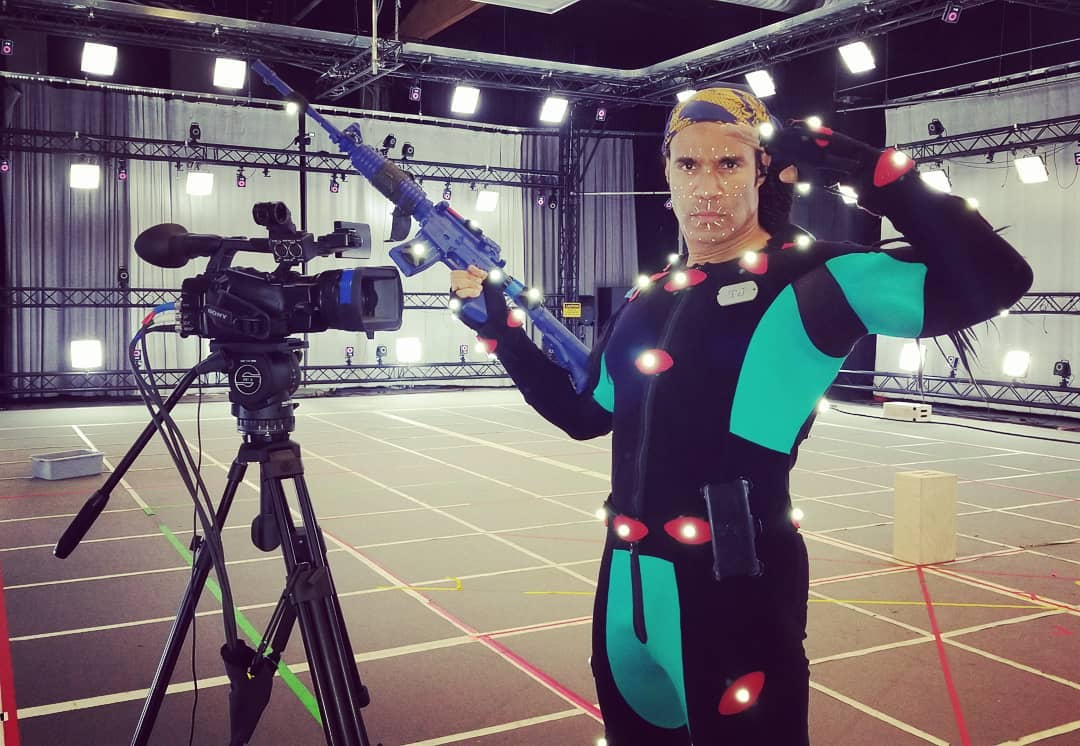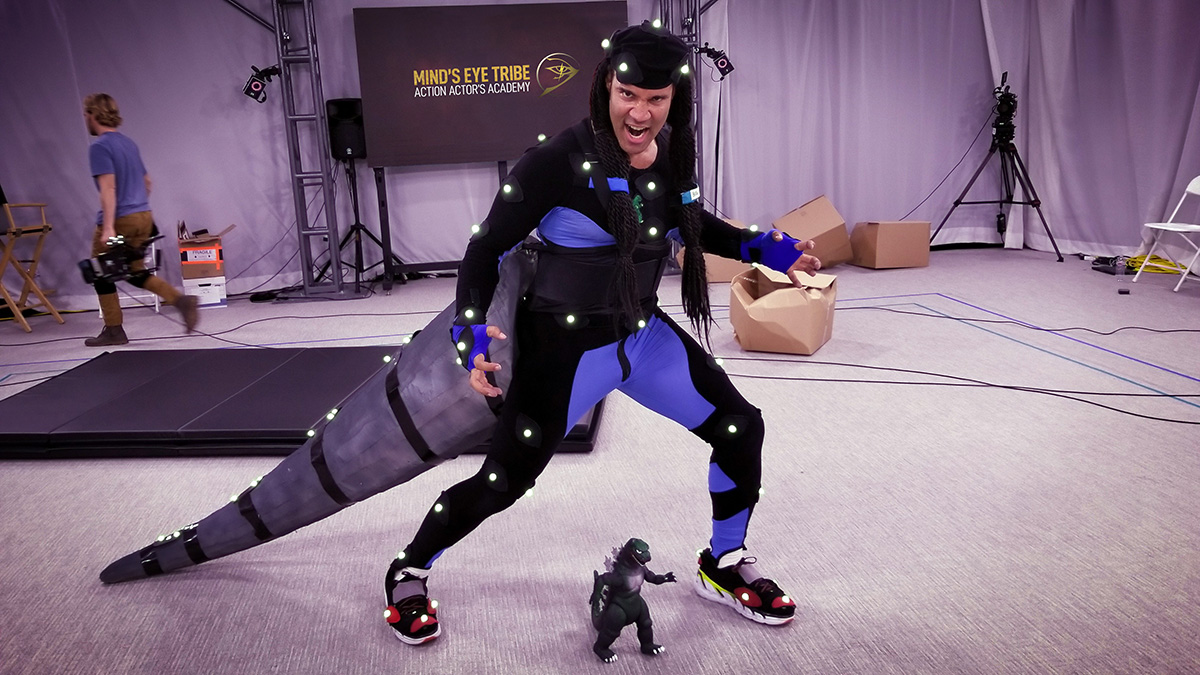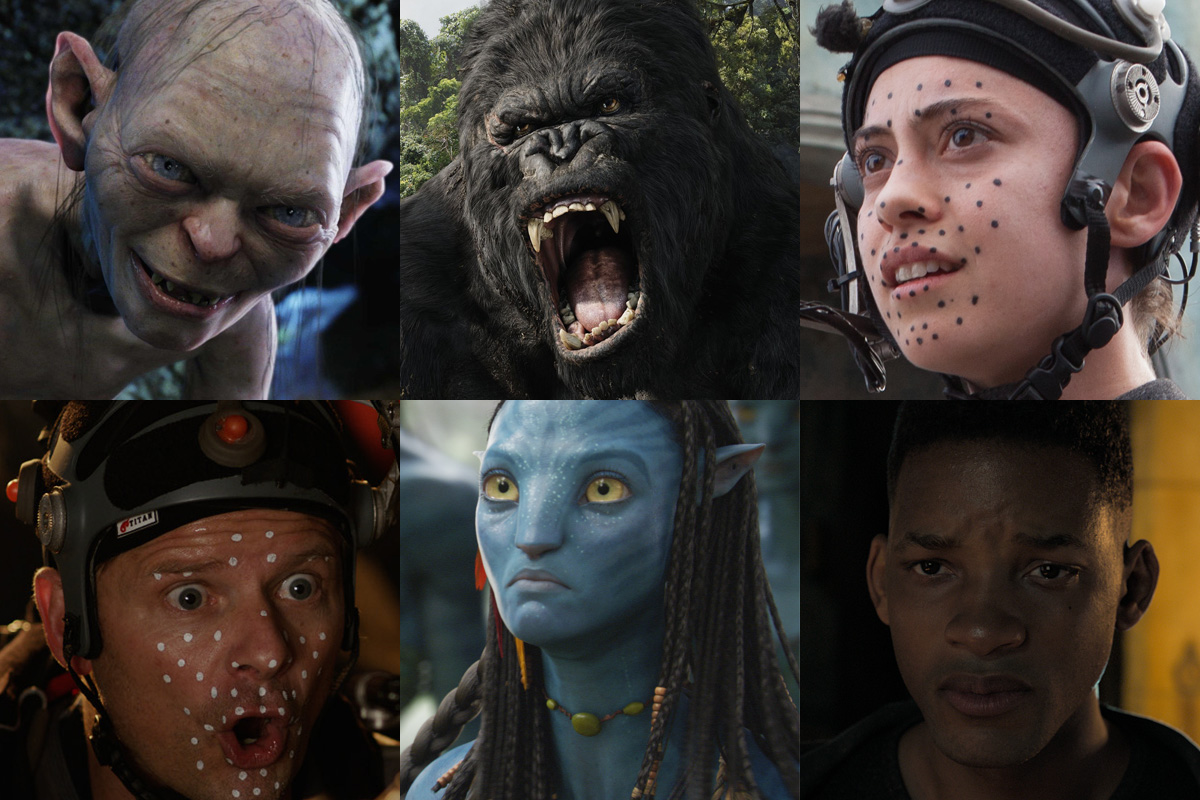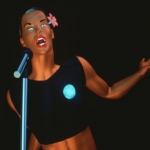T.J. Storm has been Godzilla, the Predator and now…Vader.

Many of your favorite film, TV, and video game characters start their lives as motion captured actors. And actor T.J. Storm is behind a whole lot of them.
As you’ll read in this interview, Storm almost stumbled into the field of motion capture more than 20 years ago, and stayed there ever since, delivering a number of iconic roles. He’s provided mocap services as Godzilla for the past two Hollywood films. He’s been Colossus in Deadpool, he’s been the Predator and, most recently, he’s the mocap performer behind Vader in the latest VR Star Wars series.
Here I asked Storm how all this came to be, what having a tail for Godzilla meant for the mocap, and how others can learn to be mocap performers via his school.

b&a: What was that like, the first time you put on a motion capture suit and experienced that process?
T.J. Storm: I was trying to learn how to direct, and I was at a class for directors learning how to direct. And I was sitting in the front row, I was trying to be a good student. It was up an elevated stage, where the guy who was teaching the class was speaking from. And the guy was passionate, so when he spoke, he spit, and it would rain down on everybody in the front row. It was gross.
So at lunch, I turned to the guy next to me. I’m like, ‘So you want to go towel off?’ And he just started laughing, and we started talking. He’s like, ‘Hey, man, you’re cool, and you’re a good athlete, and stuff. You want to help me test out a new technology?’
Now, this is 25 years ago. And I’m like, ‘What do you mean?’ And he told me about motion capture. ‘It makes characters move, animated characters move, but you will be moving them.’ So I’m like, ‘Yeah, it sounds like fun. I don’t think it will go anywhere, but sure…’
So I went. I had to bring some really tight clothes, because there were not really motion capture suits yet. They weren’t a thing. So I had some Power Ranger-kind of pyjamas, and we tied the markers to them, which were hard, really hard, and big. They were huge.

And he goes, ‘Okay, now, move around.” I did a little bit, and then I was like, ‘Hey, I have a question.’ I saw a broom in the corner. I was like, ‘Can I do something with that broom?’ He goes, ‘I think so. Let’s put some markers on it.’ And I did, and he did. And then I started spinning it as a martial artist spins a bow staff. And he ended up using that as his company logo at the time.
The company doesn’t exist anymore, but the logo was a stick figure that was using a bow staff and eventually it would spin and spell out the name of the company. And that was the first time I ever did it. Then about a month later, the guy called, and he said, ‘Hey, come in. I want to talk to you about something.’
So I went to the place again. I thought we were going to do some more tests and some more fun stuff. And he showed me the logo for the first time. I thought it was amazing. And then he turns around and gives me a stack of VHS tapes, and he goes, ‘This is the entire season of Star Trek. Now, I want you to watch the primary character, Captain James Tiberius Kirk. You’re going to motion capture him. William Shatner has already done all the voice tracks. You’re going to lip sync all of the tracks in this video game that we just got a contract for.’
And I was like, ‘What? Cool.’ So we did it. It was really fun, and it was amazing. I had so much fun, and I learned how to move like James T. Kirk. And I got a couple of friends, I just brought them along. There was a Sulu, there was a Bones, and then I doubled as Spock as well. And because, I think at the time, you could only have one, maybe two, people in the volume at once. And we all did everything.
b&a: You’ve done so much since then – your work on the recent Godzilla films sounds so interesting, how did that come about?
T.J. Storm: The first time I walked in – like many motion capture jobs – they don’t tell me anything until I get there. I have no idea. There’s NDAs everywhere. I don’t even know what company I’m working for. I just go to the studio. And I got there one day, and it was me and two other guys standing in the volume. And the guy walks up to us. He goes, ‘All right, you are MUTO number 1, you’re MUTO number 2, and you’re Godzilla.’

Now, the very first movie my father ever took me to see when I was a little, little kid in a movie theatre was a movie called Godzilla Vs. The Smog Monster. So I was a Godzilla fan from the time I could remember movies, because that was the first major movie character that I ever saw, and he was bigger than life obviously. So standing there, hearing those words, I just started grinning on the inside, but on the outside, I was trying to be cool.
I was like, ‘Yeah, okay. So what are we doing?’ But on the inside, I’m like, ‘Yes, that’s awesome.’ We had to find the movements, because at the time that we were doing the work, they didn’t have a character model for me to see. I had no idea what the new Godzilla looked like. And when you’re doing movement, you look at the character, you break it down, and you find its movement. Well, there was nothing to look at here, so I was like, ‘All right, we all know what Godzilla looks like, so how’s this?’ And he’s like, ‘Oh, okay, don’t do the Tyrannosaurus Rex arms. He has shoulders.’
I was like, ‘Oh, oh, okay.’ And then we had to, bit by a little bit, find the movement that everybody was happy with. We did a day of movements. The studio had to okay it. It came back with a couple of notes, but for the most part, everything was great, and we went on from there.
b&a: I’ve seen images of you wearing a tail. Was that for the fist new Godzilla, or the second?
T.J. Storm: On the first one, it came up that some of the choreography called for a tail slap. I slap one of the MUTOS into a building, I believe. And I was like, ‘You guys, you guys, this will look so much cooler if I had a tail.’ It’s really, really hard to imagine the physics of a rotating body followed by a long heavy tail, colliding into something moving at me. It’s really hard to imagine those physics unless you’ve been working with everybody for a long time and you get it.
And the three of us had just got together that day. So I was like, “Is there a way we can build a tail?’ And one of the guys said, ‘Oh, I think there’s some foam over there.’ So he literally ran over and cut the foam into one side that was very, very wide, and it went all the way down to a tip. And then we had no way to attach it, so I ran out to my car – I practise martial arts, and I pulled out my black belt. And we fed the black belt trough the thick end, tied it around my waist, and voila, I had a foam tale that everybody could see. And now, we all understood how the timing, and the physics of the tail slap was supposed to work.
In the second one, in Godzilla: King of Monsters, there’s an awesome company named Fonco Creative, Fon Davis, and he makes all kinds of really cool practical effects for all kinds of movies, for everything, little buildings, explosions, spaceships, and, Godzilla tails. And this one was very articulated. It had lots of joints in it, so it was really, really great.
b&a: You also did motion capture work for Colossus in the first Deadpool film. What was your thought process going into that one?
T.J. Storm: Again, we had to find some of the movement. I worked on this with Tim Miller and Derron Ross – Tim Miller was the director, but he’s also a very in-depth visual effects guy from Blur, and Derron is an awesome action director as well as animation supervisor.

We had to find the movement for Colossus. The one thing that we knew was he was big. We had the model to look at, so that helped. I was looking and moving in real time, so I could find it. But at the same time, he had to have a spirit of a Boy Scout. One of the original gags in the movie was any time he saw blood, he would vomit, because he was such a Boy Scout, he really didn’t like violence.
b&a: When you’re doing performance capture work, do you see it as important to be able see your CG avatar in real-time, while you’re mo-capping, to check it’s working. Does that happen often, or does it not matter to you either way?
T.J. Storm: Fortunately, coming from the old school, before real-time even existed, I have a great imagination. Growing up, playing in the yard, playing Terminator in the yard, playing dinosaurs in the yard, just as a little kid. Then fast forward to elementary school, high school, playing Dungeons & Dragons. I’d get up chase my players around the table to show them what was happening, and we all had a ball. It was nothing but fun.
That really helps your imagination. Later, I became a dancer, and I moved like a robot, because it was the time of break-dancing and popping and locking. And I actually used those moves in Avatar, believe it or not, as the AMP Suit the colonel climbs into, to fight the hero at the end of the movie. So I was that same robot, and I’ve done it for countless video games as well.
But dancing, pretending, creating, moving and playing, they gave me a strong background for movement. So, if I have to, I can do without the real-time. On the other hand, the real-time gets us to the point that I can make less mistakes and find my movement more specifically, so that the animators have less to clean up at the end of the day.
I know how to keep my muscles from clipping into my other muscles, or my shoulder pads, or elbow spikes, or whatever thing might be special about the character. I can make their job little bit easier by really seeing the real-time and finding the limits of my movement while at the same time, finding the depth of my personality based on what I have to work with in the model and in the rigging.

b&a: Because you are a dancer and a martial artist, are there any kind of restrictions that you do find with mo-cap suits? And what are the best suits for getting the most out of your performance?
T.J. Storm: Well, I have to say, I hate the chinstrap. They always make me wear one when we’re doing action. That drives me insane. For the performers, for almost every performer, it’s punishment to have to put on a chinstrap. It’s necessary, it’s a necessary evil, but we all laugh. Whoever has to wear the chinstrap first, that person lost.
b&a: In terms of the Mind’s Eye Tribe, which is your school, how do you structure the teaching there? How does someone actually learn to do motion capture?
T.J. Storm: We find that it’s best if you go through the introduction to performance capture. And we separate motion capture and technology and performance capture as the art of the actors that do their art in the technology. But we tell them how it works and why it works first off. We try to impart to them that, ‘Look, you’re making the animator’s job a lot easier. The better you are at doing that, the more often you’re going to get hired.’
And we go from there. So, we say, ‘It’s great that you understand motion capture. That was the first step. Now, you need a set of physical skills.’ So we suggest you’re a strong actor, or if you’re more of an action actor, or a stunt person, or a creature performer, then we take you down those paths. So we teach you sword work. If those are classes you want to take, we’ll give you that path. Maybe we’ll teach you tactical work. If those are paths you want to take, we’ll let you go down that.

We have classes called Beast Mode, specifically for creature performers, and each level teaches you more and more about how to create fantastic, or interesting, creatures. And every class track has at least three levels.
If you work on video games a lot, you start to notice, oh, every video game has some kind of sword, or light sabre, or buzzsaw that I have to believe. So using swords is a skill. Or if you’re a Call of Duty type of person, having all of the tactical stuff really in your bones is absolutely a necessity.
So we really get you to understand that. Then we have specialty classes, say, we have The Hero’s Journey, which if you’re really wanting to be in a lot of these projects, you want to know how to move like a hero. I have worked on a tonne of projects where the lead actors, they’re the person who’s the hero, they have to walk like a hero, they have to take the iconic poses.
What we’ve found is that the actor needs to understand what the iconic poses that are expected of them are, and they generally don’t. Nobody stands like a superhero in their normal life, there’s no reason to. But if you watch a tonne of movies, you know what it’s supposed to look like. And if you practice a little bit, then you can do that as well.
We also have a magic class, which teaches you how to use superpowers and magic, and all the different schools and styles of movement that are associated with those things, because there’s a lot of different ways to move.
I’ve seen lots of people fail an audition just because they can’t hold the gun the right way, or make believe that they were a Jedi, or a witch, or a dragon. So this gets actors and performers closer to their mark in where they need to be.
b&a: Is there anything in motion capture you haven’t done yet, that might be a character, or some sort of move, or performance, that you would like to try out at some stage?
T.J. Storm: Well, I’m so happy to have been part of the Marvel universe. I got to be in the Marvel universe, and I’ve been Rocket Raccoon, I’ve been Groot, I’ve been Iron Man in Captain America: Civil War. I’ve been Colossus. So I’ve been in Marvel, and that makes me super happy. I want to do more of those. But Star Wars eluded me forever, and I just never got to be in the Star Wars universe ever. And all my friends were somehow a part of it.
I was like, ‘Why can’t I be in Star Wars?’ Well, I’m proud to say that I am Darth Vader in Vader Immortal, the VR series. And not only am I in the Star Wars universe, I am Vader, so that is awesome. I’m the Predator, I am Godzilla, and I’m Darth Vader. I’ve been so excited about that.

Follow along during this special weekly series, #mocaphistory, to re-visit motion capture history and hear from several performance capture professionals.


















